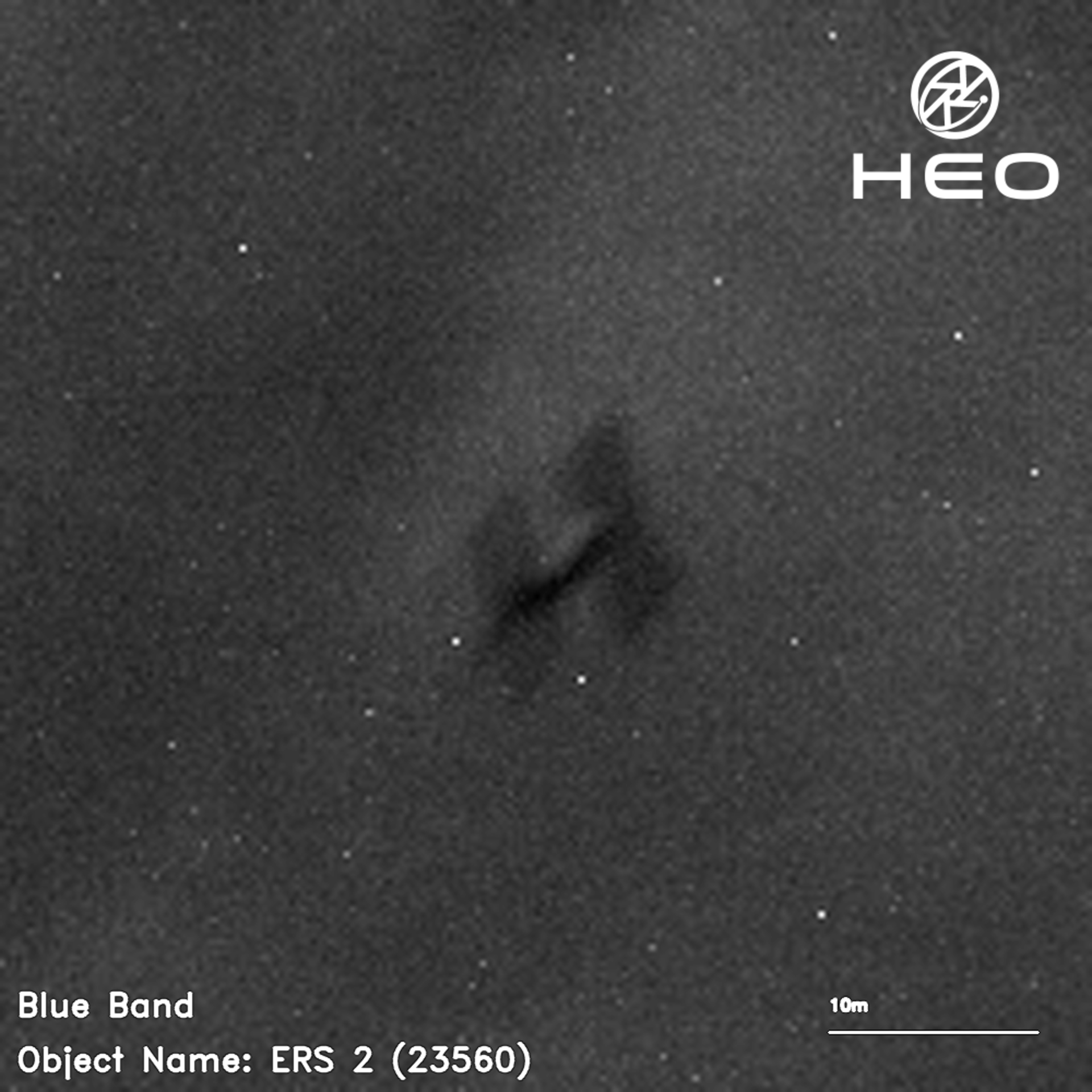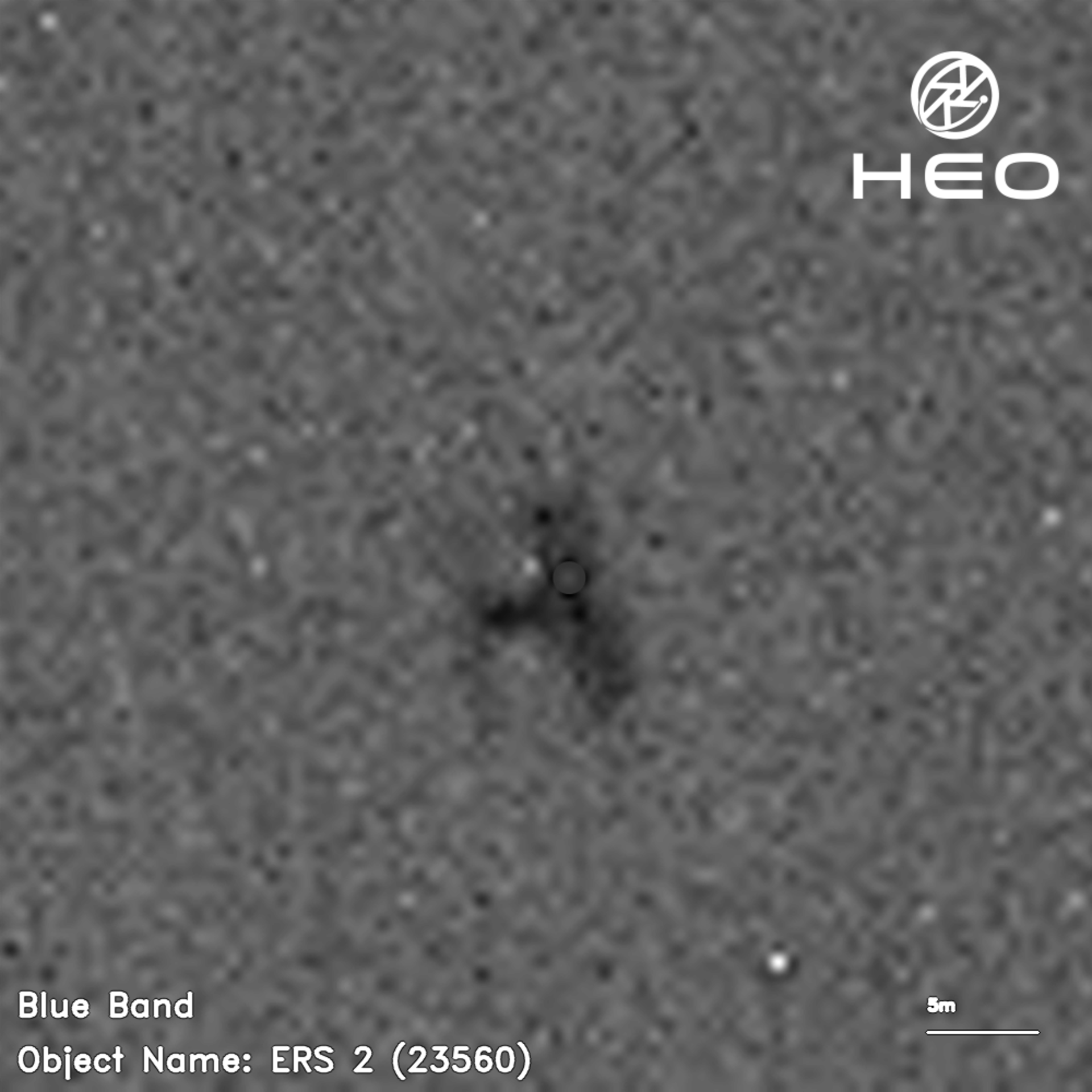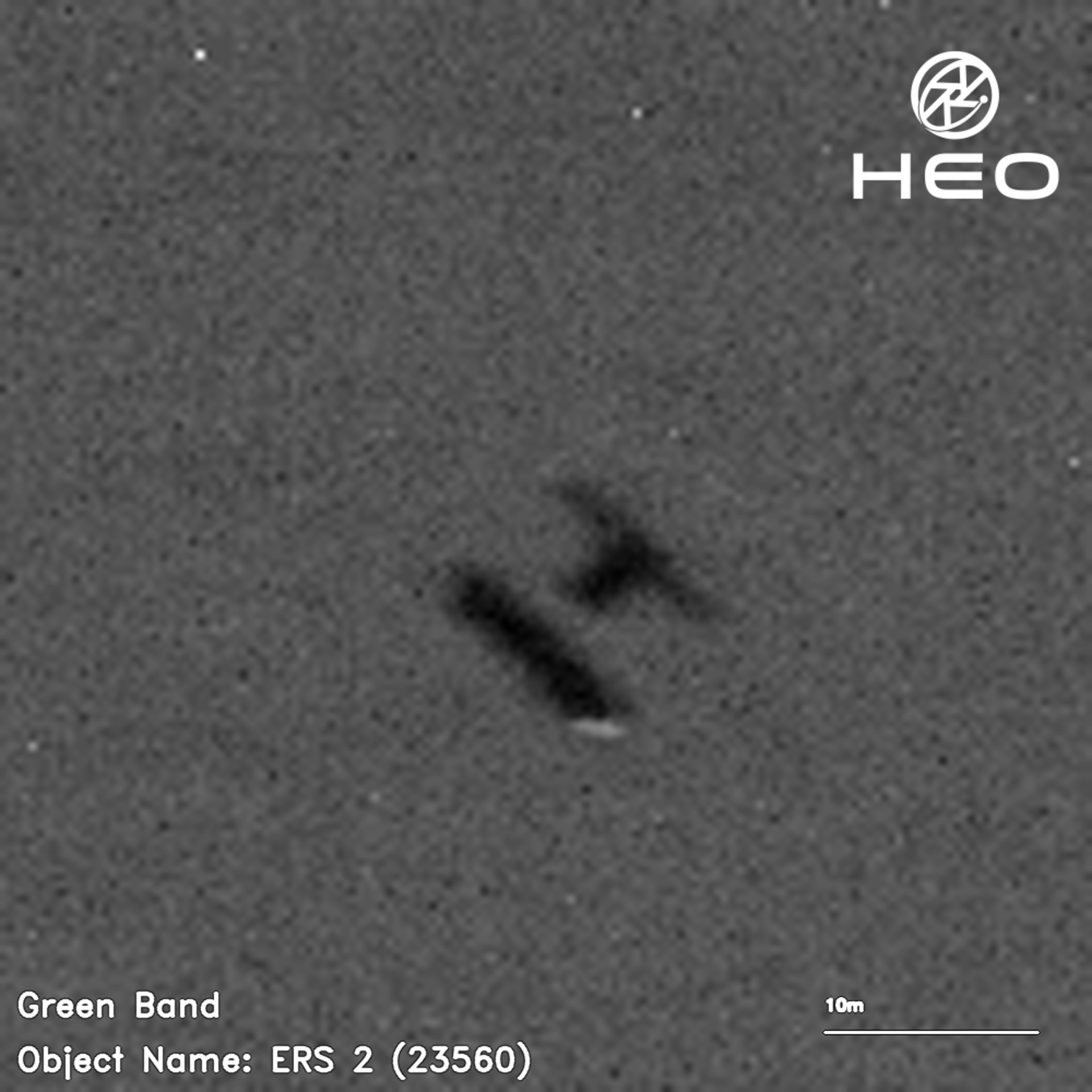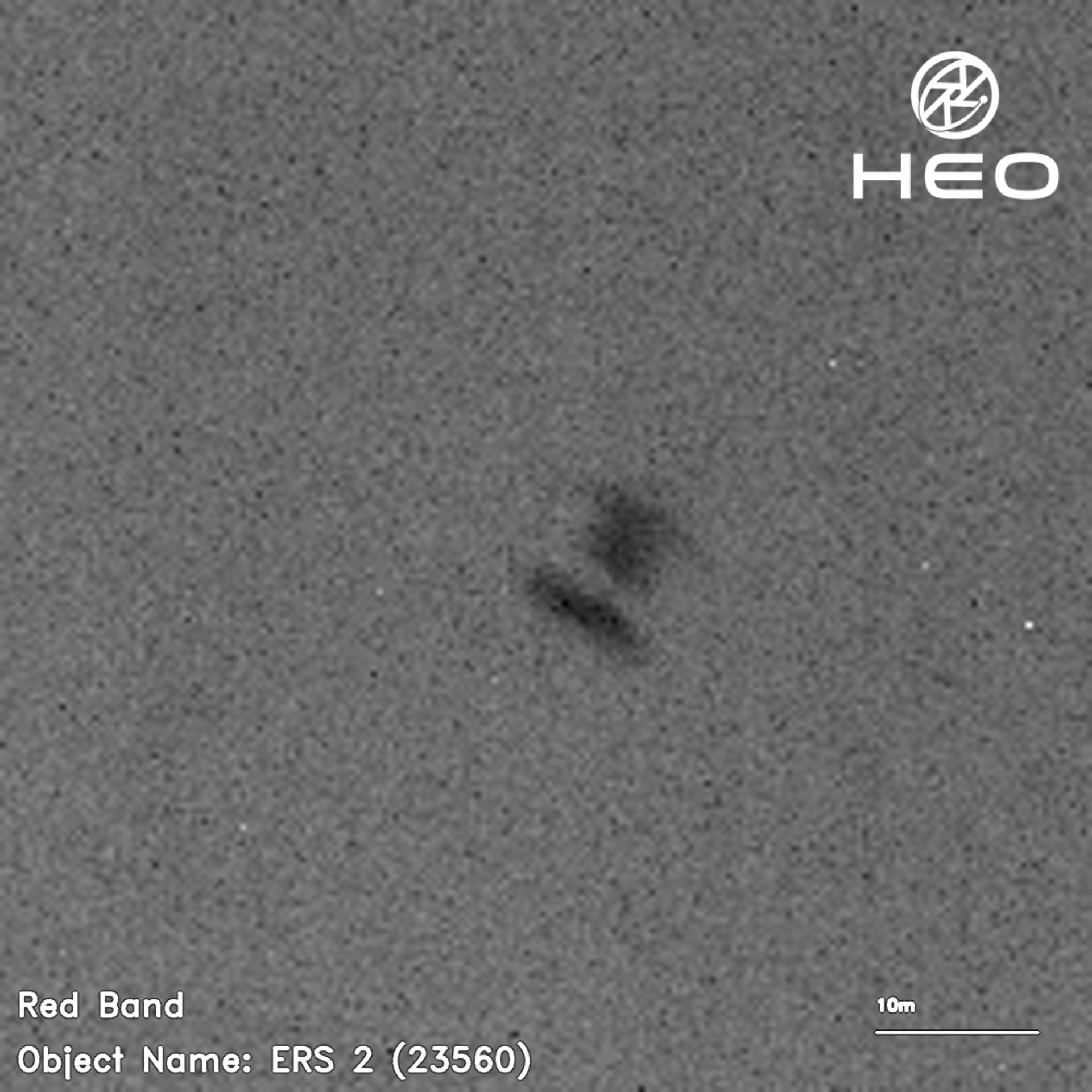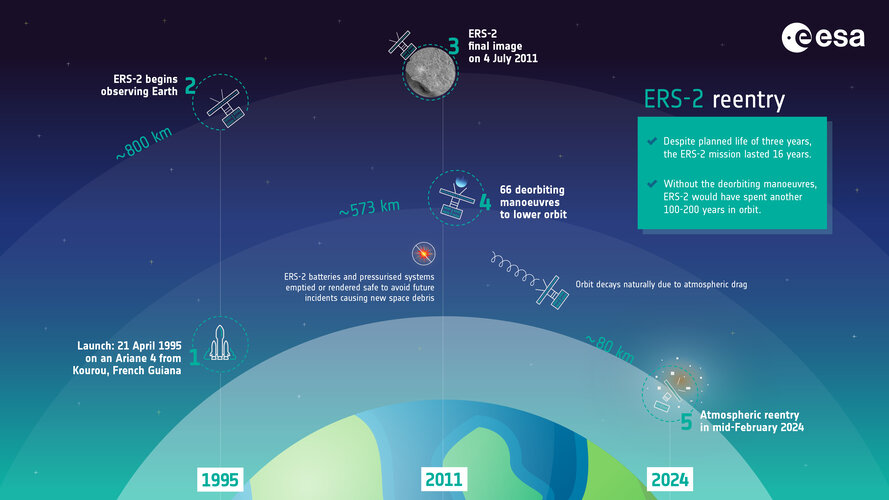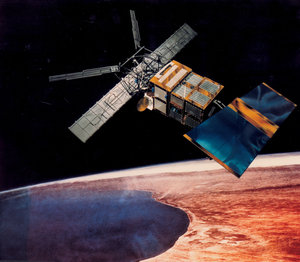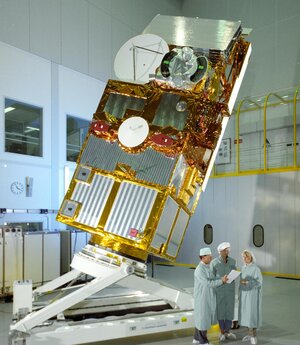ERS-2 spotted by other satellites during descent
What happened?
ESA’s European Remote Sensing 2 satellite (ERS-2) was recently spotted tumbling as it descends through the atmosphere. These images were captured by cameras on board other satellites by Australian company HEO on behalf of the UK Space Agency.
How and why were they taken?
National space agencies operate national reentry warning services and often conduct research to inform future policies and guidelines on safe and sustainable space operations.
They share data with ESA and other international partners through forums such as the Inter-Agency Space Debris Coordination Committee to support the monitoring of satellite reentries.
The UK Space Agency recently worked with HEO to capture these images of ERS-2 during its descent. Using cameras on other satellites to image objects reentering the atmosphere is a relatively new approach. In future, these images may be used alongside data from ground-based sensors to refine reentry predictions.
These images were captured during ‘flyby’ inspections, during which a satellite photographs an inactive spacecraft, rocket body, upper stage or uncontrolled space debris as it passes. This is opposed to dedicated inspection missions, such as the recently launched Astroscale ADRAS-J mission, which approach an object and conduct prolonged close-proximity investigations.
When were they taken?
These images were captured on 14 January, 28 January, 29 January and 3 February when ERS-2 was still at an altitude of over 300 km. More details can be found in the image captions.
What is ERS-2’s altitude now, and when will it begin to break up?
The satellite has since dropped to an altitude of around 200 km. It is now falling by more than 10 km per day and the speed of its descent is increasing rapidly. When it reaches approximately 80 km, it will begin to break into pieces. Most of these pieces will burn up completely. The risks associated with satellite reentries are very low.
Why is ERS-2 reentering the atmosphere, and what happens next?
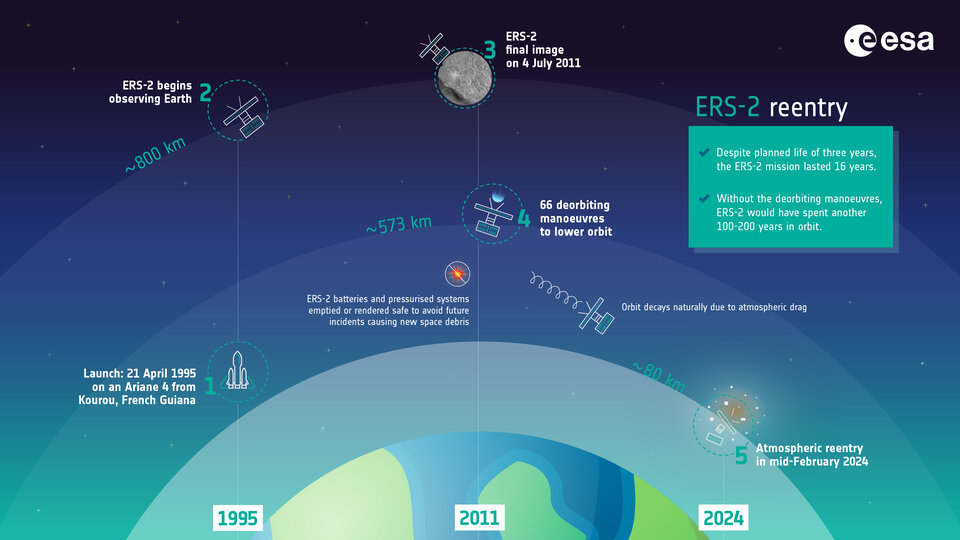
The ERS-2 mission came to an end in 2011 when ESA decided to deorbit the satellite and greatly reduce its potential long-term impact on the space environment. The longer that an inactive satellite spends in orbit, the greater the risk of collision with other satellites or pieces of space debris. The deorbiting reduced the time that ERS-2 remained in orbit after the end of its mission from more than 100 years, to less than 15.
ERS-2 is now expected to undergo atmospheric reentry and begin to break up on 21 February 2024. The latest updates are available on ESA’s Rocket Science blog.















 Germany
Germany
 Austria
Austria
 Belgium
Belgium
 Denmark
Denmark
 Spain
Spain
 Estonia
Estonia
 Finland
Finland
 France
France
 Greece
Greece
 Hungary
Hungary
 Ireland
Ireland
 Italy
Italy
 Luxembourg
Luxembourg
 Norway
Norway
 The Netherlands
The Netherlands
 Poland
Poland
 Portugal
Portugal
 Czechia
Czechia
 Romania
Romania
 United Kingdom
United Kingdom
 Slovenia
Slovenia
 Sweden
Sweden
 Switzerland
Switzerland


























